★★★½
“Life imitating art, imitating life”
 Del Castillo is the undisputed queen of the action telenovela. She made her name as the original “Queen of the South” in one of the most popular entries ever, La Reina Del Sur, and has since followed that up with Ingobernable and Dueños del Paraíso, playing the Mexican First Lady and another ambitious drug dealer. It was while filming the latter, that the stranger than fiction story told in this documentary reached its climax.
Del Castillo is the undisputed queen of the action telenovela. She made her name as the original “Queen of the South” in one of the most popular entries ever, La Reina Del Sur, and has since followed that up with Ingobernable and Dueños del Paraíso, playing the Mexican First Lady and another ambitious drug dealer. It was while filming the latter, that the stranger than fiction story told in this documentary reached its climax.
As we mentioned at the end of the Reina article, in January 2012, she Tweeted about notorious drug-lord El Chapo. Three and a half years later, after he had been arrested, and subsequently escaped from prison, this led to her and Sean Penn visiting the fugitive, with the plan being to make a film based on his life. Except Penn turned it into an interview for Rolling Stone, the Mexican government got very upset with Del Castillo, and when El Chapo was recaptured, they said it was largely a result of the Del Castillo/Penn visit – with all that implies. The actress was investigated for money laundering, the charges being dropped only a couple of days ago, and is still largely persona non grata in her home country.
The three-part series tells events from her perspective. and even though she was a producer on it, Del Castillo doesn’t necessarily come out clean. From her first Tweet, she seems a little naive. “Let’s traffic love,” she says to a man who supposedly told authorities subsequently, he had killed between two and three thousand people. It feels as if Del Castillo believed the narcocorrida hype: bosses like El Chapo are often seen as folk heroes in Mexico, along the lines of Robin Hood. How much their social works are genuine, and how much practical business sense, is open to question. She does say she understands the cinematic meaning of the word “cut”, and lets go of the characters she plays. Yet I also suspect Kate may have felt that playing a trafficker on TV made her El Chapo’s “equal” somehow.
You can certainly argue that journeying into the heart of the Mexican countryside to meet the most wanted man on the world, who seems to have a crush on you, shows poor judgment. On the other hand, she does come over as courageous. While you can question her ideals, it’s hard to say she’s not entirely committed to them, regardless of the personal cost. Even now, you sense the personal cost has, if anything, probably hardened her resolve. I can’t blame her at all for that: the Mexican government appear to have engaged in a campaign of harassment of Del Castillo, little short of a vendetta. This involves everything up to, and including, fabricating text messages between her and El Chapo, with the intention of damaging her reputation and credibility.
Penn comes off little better. Though we don’t hear directly from the actor – he refused to take part in the documentary – the evidence presented here seems to suggest he used her for his own ends. Most damningly, he got journalist accreditation from Rolling Stone for himself and the film producers who also went with them – but not Del Castillo. And while he may not have directly or wittingly informed the authorities of their plans, it’s quite possible it was through his circle they became aware of the trip. In a subsequent media statement about the film, Penn’s camp didn’t hold back, saying, “This is nothing but a cheap, National Enquirer-esque tale spun by a delusional person whose hunger for fame is both tawdry and transparent.” I think it’s safe to say, if Kate ever gets to make her El Chapo movie, Penn will not be taking part.
While mostly talking heads and old news footage, it does a decent job of weaving the narrative, despite the lack of contemporary input from two-thirds of the people in the photo above. It was still interesting enough to make Chris become one of Del Castillo’s 3.5 million followers on her bilingual Twitter feed. Now, if only I can get her into watching Dueños del Paraíso…
Dir: Carlos Armella





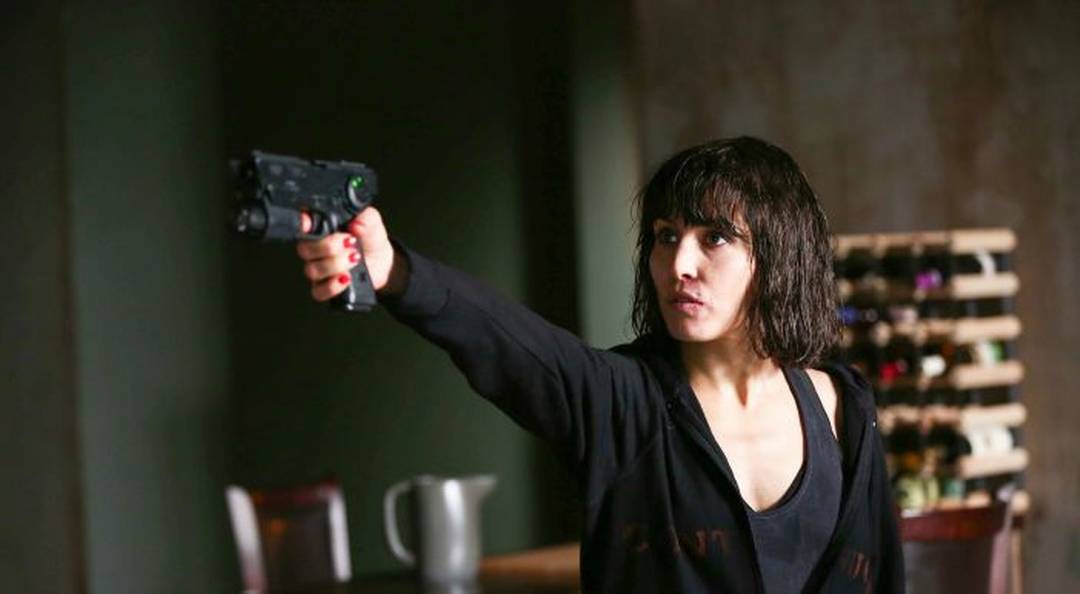
 ★★★★
★★★★ I have only vague memories of the Gorgeous Ladies of Wrestling, which never quite made the same cultural impact on the far side of the Atlantic as in their native country. I seem to recall seeing a couple of episodes, deciding it was a bit crap, and then slapping in a Megumi Kudo barbed-wire death match tape instead. But my interest was rekindled by the wonderful documentary,
I have only vague memories of the Gorgeous Ladies of Wrestling, which never quite made the same cultural impact on the far side of the Atlantic as in their native country. I seem to recall seeing a couple of episodes, deciding it was a bit crap, and then slapping in a Megumi Kudo barbed-wire death match tape instead. But my interest was rekindled by the wonderful documentary,  This is a great deal of fun, striking a very impressive balance between the drama, comedy and – to my surprise – the wrestling elements. For the show does a particularly good job of explaining both the appeal of the sports entertainment in question, and the work that goes in to making it look good. Here, it probably helps that real wrestlers were involved: Chavo Guerrero was the main consultant, and his uncle, Mando Guerrero, helped train the original GLOW ladies in the eighties. Fans will also spot John Morrison/Johnny Mundo, Brodus Clay, Carlito and Joey Ryan in various roles. It’s not at all a parody of the sport; to a significant degree, the original GLOW felt like that. But it also does extremely well at linking the wrestlers and the characters they play, and showing how the latter evolve and develop out of the former.
This is a great deal of fun, striking a very impressive balance between the drama, comedy and – to my surprise – the wrestling elements. For the show does a particularly good job of explaining both the appeal of the sports entertainment in question, and the work that goes in to making it look good. Here, it probably helps that real wrestlers were involved: Chavo Guerrero was the main consultant, and his uncle, Mando Guerrero, helped train the original GLOW ladies in the eighties. Fans will also spot John Morrison/Johnny Mundo, Brodus Clay, Carlito and Joey Ryan in various roles. It’s not at all a parody of the sport; to a significant degree, the original GLOW felt like that. But it also does extremely well at linking the wrestlers and the characters they play, and showing how the latter evolve and develop out of the former. I’m a big fan of any film with an outrageous premise, and this one certainly delivers. Mob hitman Frank Kitchen (Rodriguez) carries out his latest job with no qualms, killing a debtor. What he doesn’t realize is, the victim’s sister is a talented but EXTREMELY twisted surgeon, Dr. Rachel Jane (Weaver). She vows to take revenge on Frank by removing what she feels matters most to him: his masculinity. Kitchen is knocked out, kidnapped, and wakes up in a seedy hotel room, to find herself in possession of a couple of things she didn’t have before, and missing something she used to have. But gender reassignment does not make the (wo)man, and an extremely pissed-off Frank vows revenge of her own, both on Jane and Honest John Hartunian (LaPaglia), the former employer who betrayed Kitchen.
I’m a big fan of any film with an outrageous premise, and this one certainly delivers. Mob hitman Frank Kitchen (Rodriguez) carries out his latest job with no qualms, killing a debtor. What he doesn’t realize is, the victim’s sister is a talented but EXTREMELY twisted surgeon, Dr. Rachel Jane (Weaver). She vows to take revenge on Frank by removing what she feels matters most to him: his masculinity. Kitchen is knocked out, kidnapped, and wakes up in a seedy hotel room, to find herself in possession of a couple of things she didn’t have before, and missing something she used to have. But gender reassignment does not make the (wo)man, and an extremely pissed-off Frank vows revenge of her own, both on Jane and Honest John Hartunian (LaPaglia), the former employer who betrayed Kitchen.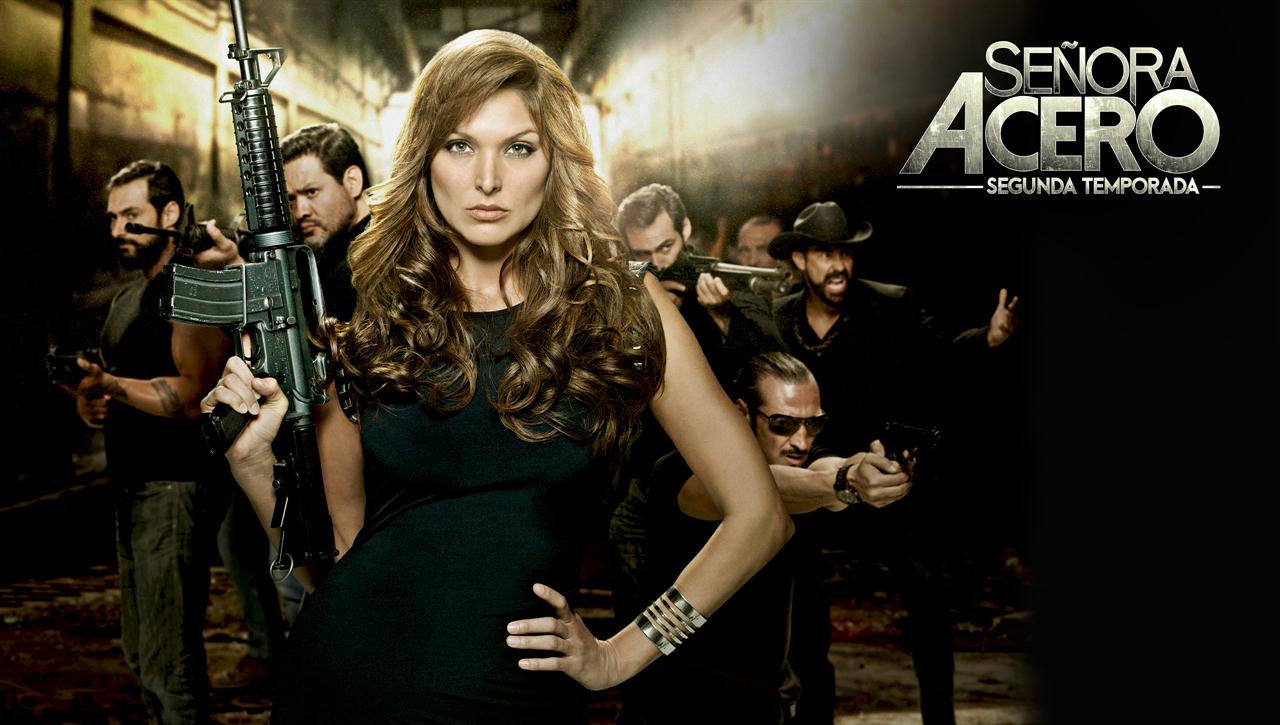 ★★★
★★★ But it is actually fairly rough on occasions: for instance, the removal of Indio’s fingers is well-staged, and revisited frequently [this show
But it is actually fairly rough on occasions: for instance, the removal of Indio’s fingers is well-staged, and revisited frequently [this show 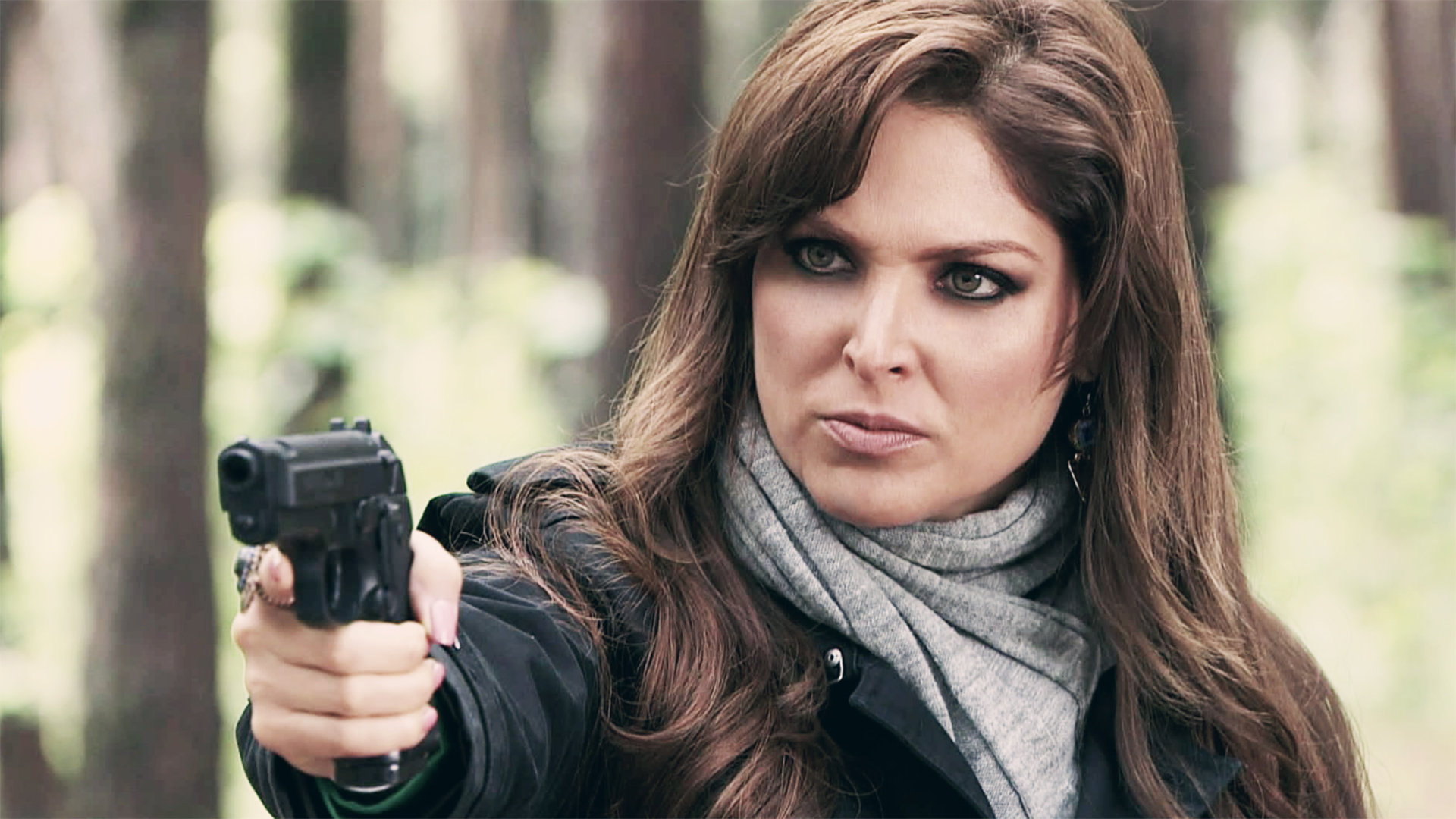 The music in the show is interesting… Norteña band Los Tucanes de Tijuana produced and performed
The music in the show is interesting… Norteña band Los Tucanes de Tijuana produced and performed  The Brazilian special police unit, known as BOPE (Batalhão de Operações Policiais Especiais) have a ferocious reputation for a hard-edged approach to its work. This is, likely, necessary for surviving the favelas (slums) of Rio in which they operate, going up against heavily-armed drug dealers. But with this also comes a “by any means necessary” approach, which has come in for criticism. They’ve been the topic of films before, most notably the incredible Elite Squad, which is an all-time classic of action cinema (and removed any chance of us attending the 2016 Olympics). It’s into this obviously macho environment, that rookie policewoman Francis (Pires) is dropped, and has to make her way.
The Brazilian special police unit, known as BOPE (Batalhão de Operações Policiais Especiais) have a ferocious reputation for a hard-edged approach to its work. This is, likely, necessary for surviving the favelas (slums) of Rio in which they operate, going up against heavily-armed drug dealers. But with this also comes a “by any means necessary” approach, which has come in for criticism. They’ve been the topic of films before, most notably the incredible Elite Squad, which is an all-time classic of action cinema (and removed any chance of us attending the 2016 Olympics). It’s into this obviously macho environment, that rookie policewoman Francis (Pires) is dropped, and has to make her way.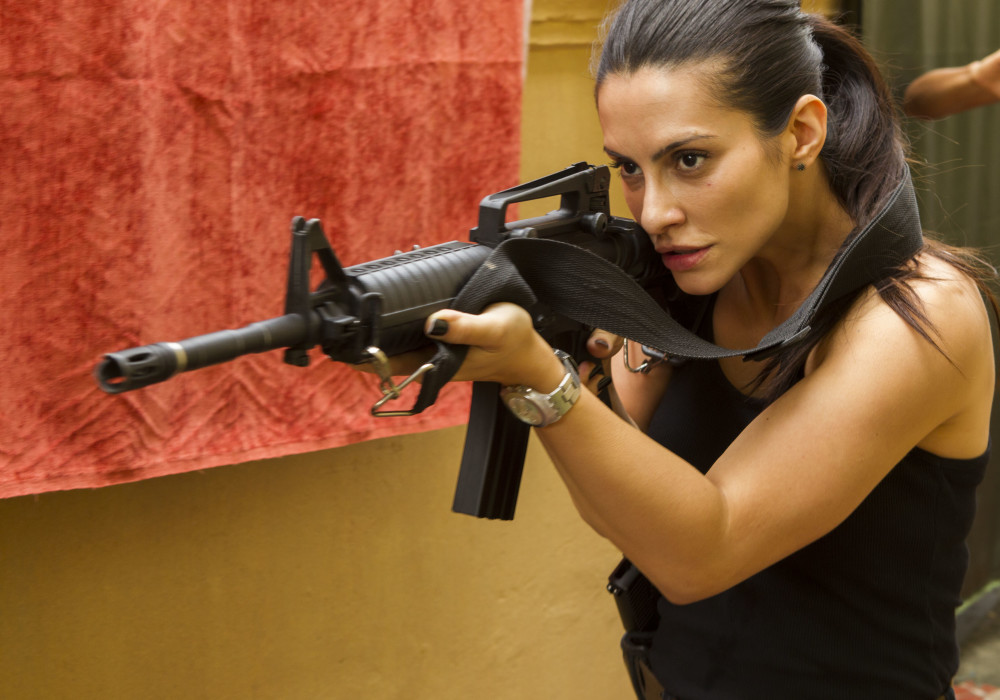
 Amy (Theobold) is insane. Or so the rest of society thinks, due to her being able to see things nobody else can. She’s trying to keep her head down, working quietly at a bowling alley. But after being attacked, she is rescued by Raquel (Wokoma), another young woman who can see exactly the same things. Amy learns from her new friend that demons are real, and live among us: Raquel has appointed herself a demon-hunter, and convinces the reluctant Amy to join her. This causes no end of issues, not the least of which is Amy’s room-mate becoming one of the possessed, and the most of which is likely the apocalyptic plan of Callum (Curran). He intends to use Raquel to open the gates of hell on Halloween, allowing thousands more demons to flood into our world and take over humans.
Amy (Theobold) is insane. Or so the rest of society thinks, due to her being able to see things nobody else can. She’s trying to keep her head down, working quietly at a bowling alley. But after being attacked, she is rescued by Raquel (Wokoma), another young woman who can see exactly the same things. Amy learns from her new friend that demons are real, and live among us: Raquel has appointed herself a demon-hunter, and convinces the reluctant Amy to join her. This causes no end of issues, not the least of which is Amy’s room-mate becoming one of the possessed, and the most of which is likely the apocalyptic plan of Callum (Curran). He intends to use Raquel to open the gates of hell on Halloween, allowing thousands more demons to flood into our world and take over humans.














 After their mother has a meltdown at her job and ends up in jail: teenage sisters Deidra (Murray) and Laney (Crow, somewhat infamous for her post-elimination meltdown on The X Factor) are left to fend for themselves. With household bills piling up – never mind trying to fund Mom’s bail, or even Deidra’s long dreamed-of college tuition – and Child Protective Services looming, things look bleak. But a visit to deadbeat Dad Chet (Sullivan, channeling David Spade), who works for a railway company, gives Deidra an idea. Hop aboard the freight trains that run by the back of their house, pop open a container to take some goods, and fence them on for cash. Things go surprisingly well, until a disgruntled railroad cop, Truman (Nelson), starts to close in on the pair, intent on rebuilding his reputation after an incident in Arizona.
After their mother has a meltdown at her job and ends up in jail: teenage sisters Deidra (Murray) and Laney (Crow, somewhat infamous for her post-elimination meltdown on The X Factor) are left to fend for themselves. With household bills piling up – never mind trying to fund Mom’s bail, or even Deidra’s long dreamed-of college tuition – and Child Protective Services looming, things look bleak. But a visit to deadbeat Dad Chet (Sullivan, channeling David Spade), who works for a railway company, gives Deidra an idea. Hop aboard the freight trains that run by the back of their house, pop open a container to take some goods, and fence them on for cash. Things go surprisingly well, until a disgruntled railroad cop, Truman (Nelson), starts to close in on the pair, intent on rebuilding his reputation after an incident in Arizona.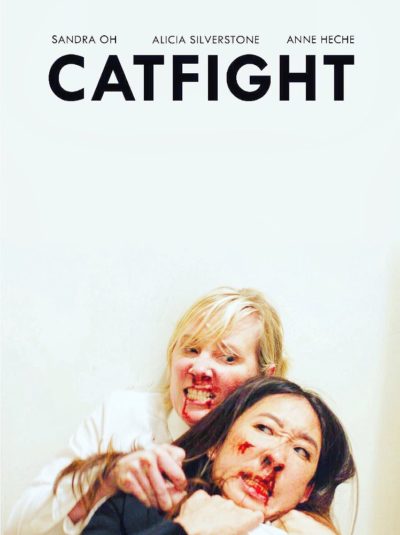 My wife is a big fan of Sandra Oh, for her long-time work on soapy medical drama, Grey’s Anatomy. This is about as far from that as imaginable. It’s a gloriously mean-spirited “comedy” [and I used the quotes out of reverence, not in a bad way], which combines social satire with gleeful hyper-violence, at a level where you would not expect to find serious actresses. Veronica (Oh) and Ashley (Heche) knew each other in college, and have since grown apart. Veronica is now wife to a defense contractor; Ashley a largely unsuccessful artist. They meet at a birthday party, and instantly the hate begins, each representing everything the other finds reprehensible. The night ends in a stairwell brawl, which leaves Veronica in a coma for two years. She awakens, to discover she has lost everything, and Ashley is now on top, enjoying commercial and critical success.
My wife is a big fan of Sandra Oh, for her long-time work on soapy medical drama, Grey’s Anatomy. This is about as far from that as imaginable. It’s a gloriously mean-spirited “comedy” [and I used the quotes out of reverence, not in a bad way], which combines social satire with gleeful hyper-violence, at a level where you would not expect to find serious actresses. Veronica (Oh) and Ashley (Heche) knew each other in college, and have since grown apart. Veronica is now wife to a defense contractor; Ashley a largely unsuccessful artist. They meet at a birthday party, and instantly the hate begins, each representing everything the other finds reprehensible. The night ends in a stairwell brawl, which leaves Veronica in a coma for two years. She awakens, to discover she has lost everything, and Ashley is now on top, enjoying commercial and critical success.